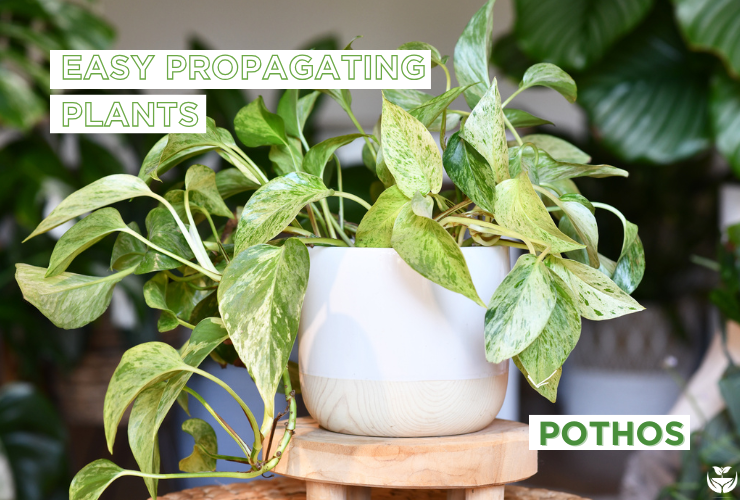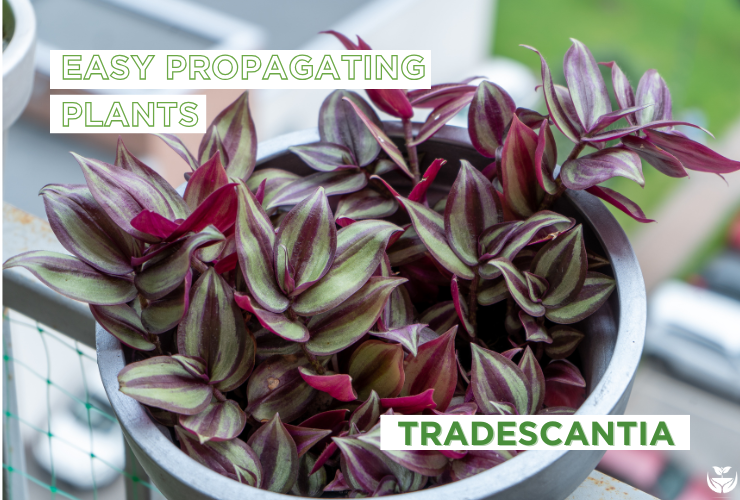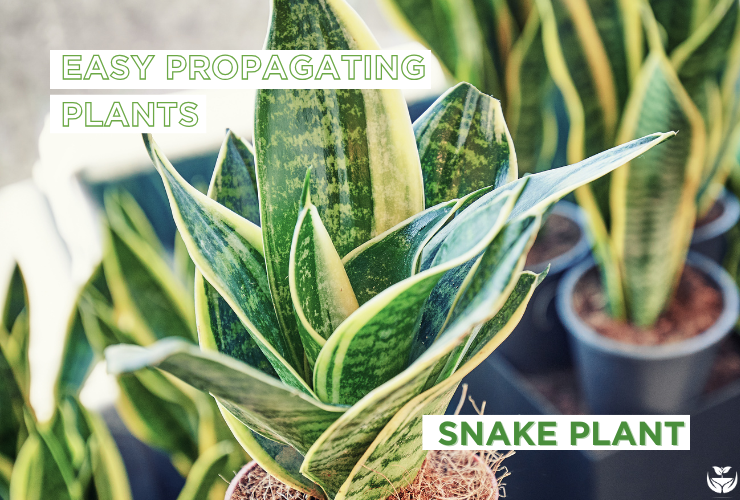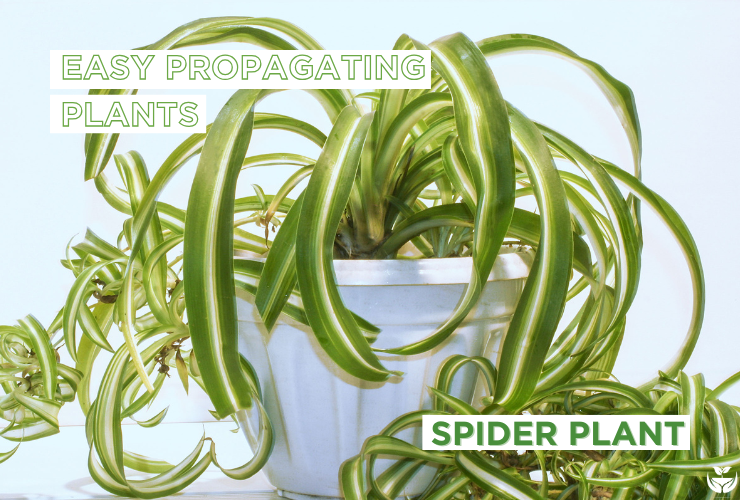A Beginner’s Guide to Plant Propagation: Growing Your Garden from Cuttings
- Freda Garacho
- Nov 6, 2024
- 5 min read

Photo Source: brebcaphotos // Canva Pro
Gardening is one of those hobbies that not only challenges you mentally, but it also comes with great rewards such as fresh produce, new plant growth, or simply just appreciating what nature has to offer. If you are a beginner gardener, owning houseplants is a great place to start your journey in the world of gardening. Caring for a houseplant tests out your green thumb where you start to learn all the tips and tricks on keeping them alive.
One of the most exciting aspects of gardening is plant propagation. This process allows you to create new plants from existing ones, saving money and expanding your plant collection!
In this post, we will explore the basics of plant propagation, focusing on simple methods you can try at home.
Understanding Plant Propagation

Photo Source: JulieK's Images // Canva Pro
Whether you are expanding your houseplant collection, preserving your favorite plants, or sharing with your friends and family, there are many benefits to propagating your houseplants.
But first, what is plant propagation?
"Plant Propagation is the practice of using plants to make more plants” - Erin Despard
When Should You Propagate?
The best time to propagate any plant is between Spring to Fall when the plant is most actively growing (source). This time allows for the cutting to produce roots quickly, but it also depends on the type of plant, its growth stage, and the living conditions of the plant.
If you choose to propagate in the winter, it’s important to keep in mind that the plant may be in its dormancy stage. The dormancy stage is where the plant has slowed its growth period due to the colder weather. Although the slow growth period can take up to two to four months for roots to develop (source), this is still a great way to get free plants from winter pruning.

Why Should You Start Propagating Your Plants?
There are many benefits to propagate your houseplants. As previously stated, it allows you to expand your collection on a budget, which we all know – buying plants often could get pricy! You could also propagate to make your plant look fuller in its pot, which would also stimulate growth for the propagated plant. In addition, they make great gifts for your friends and family, especially if they are fellow plant lovers! Propagation teaches you about plant growth, biology, and the specific needs of different species, making you a more knowledgeable gardener.
Simple Methods of Plant Propagation
Let’s look at 3 easy methods of plant propagation that are perfect for beginners:
Stem Cuttings Propagation
What You Need:
A healthy parent plant
Sharp scissors or pruning shears (make sure you sterilize them before use)
A glass of water or aerated potting soil mix
Optional: rooting hormone
How to Do It:
Choose a Healthy Stem: Select a healthy stem from your plant, ideally one that is not flowering.
Cut the Stem: Using clean scissors, cut a 4-6 inch section from the stem. Make the cut just below a leaf node for better results.
Prepare the Cutting: Remove the lower leaves, leaving a couple of leaves at the top. If you’re using rooting hormone, dip the cut end in it.
Water or Soil: Place the cutting in a glass of water or directly into potting soil. If using water, make sure the cut end is submerged.
Wait for Roots: If you are using water, change the water regularly. In about 2-4 weeks, you should see roots developing. Once they’re a few inches long, transplant them into soil.

Leaf Cuttings
What You Need:
Leafy plant (like succulents)
Aerated potting soil mix
A small pot or container
How to Do It:
Select a Leaf: Choose a healthy leaf from the parent plant.
Make the Cut: Cut the leaf off at the base, being careful not to damage the plant.
Plant the Leaf: Place the leaf on top of moist potting soil and gently press it down, or bury the cut end slightly in the soil.
Water and Wait: Keep the soil moist and place the pot in a warm, bright location. In a few weeks, you should notice tiny plantlets forming around the base of the leaf.

Division
What You Need:
Clumping plants (like hostas, daylilies, or ferns)
Garden spade or trowel
How to Do It:
Choose the Right Time: Spring or fall is the best time to divide most clumping plants.
Dig Up the Plant: Carefully dig around the plant’s roots and lift it out of the ground.
Separate the Clumps: Use your hands or a spade to gently separate the clumps into smaller sections, ensuring each division has roots.
Replant: Replant the divisions in your garden or in pots, water them well, and watch them thrive.
Water Propagation VS. Soil Propagation

You will see from many gardeners online that there are also different mediums where you could plant your new propagation – in soil or water. Most propagated plants can root in the water like pothos and monstera plants, while others should be planted directly into soil like jade plants and succulents.
Tips on Using Water for Propagation
Place the plant in an area with bright indirect light
Change out the water every 3-5 days
Tips on Using Soil for Propagation
Use an aerated soil mixture to make sure the soil isn’t too packed
Use pots with drainage holes for water to escape and avoid root rot
Although each plant is different, there is no right answer about which environment they should be placed in. The common thing to note between soil and water is the nutrients it carries. One thing about new propagation is that it no longer has its own root system to get its nutrients from. Therefore, it is important to create an environment where the propagations are able to get nutrients. The microbes from our biofertilizer mixture will add nutrients to the water or soil that the propagated plants are looking for to develop strong and healthy roots!
Tips for Successful Propagation

It is important to note that not all plants are the same! Plant propagation is a time-consuming procedure where you patience is key. Not all cuttings will take root, and it can take time for new plants to grow. Don’t be discouraged by failures.
Keeping a clean environment will also help the growth of the plant. Sanitizing your tools used to cut the propagations will prevent the spread of diseases.
Below are other tips you can try for yourself to have a successful propagation:
It is believed that all pothos plants carry a bacteria that allows for other plant cuttings to grow faster – read here to learn more and try for yourself!
Recreating the environment for your houseplants is important whether they are a cutting or a full plant, especially if they are a tropical plant. Using a humidifier will mimic the humidity most tropical plants need to continue to thrive.
If you are comfortable, consider using a rooting hormone to speed up the growth of your propagated plants
Beginner Friendly Plants to Propagate
If you have read all the tips and tricks on plant propagation and ready to start for yourself, below is a list of beginner gardener friendly houseplants that are easy to propagate! Any of the above methods and environments would work for these plants, as they will start to grow roots in no time. Don’t forget to water with our biofertilizer to add nutrients!
5 Beginner Friendly Plants to Propagate
Start Propagating Now!
Plant propagation is a fantastic way to enhance your gardening experience. It’s cost-effective, educational, and a wonderful way to share plants with others. Whether you choose stem cuttings, leaf cuttings, or division, each method offers the opportunity to nurture new life from your existing plants! So, gather your supplies, choose your favorite plants, and start propagating! Happy gardening!
Have you tried plant propagation? What success have you had in propagating in water versus soil? Share your experience in the comments below!
Don’t forget to follow our socials for other gardening tips!
Subscribe to our monthly newsletter where you will get exclusive content and promotions for our product!
Blogger Biography

Freda is a Toronto-based social media and digital marketer. New to the plant world, she is looking forward to learning all the tips and tricks on how to keep her plant babies thriving! If she's not walking her maltipoo Leo, you can find her practicing yoga or enjoying live music.























Comments